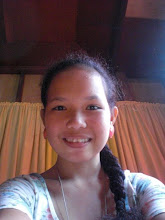In the Philippines today, you can obviously see the evident change of the original pre-colonial fashion. Before, they were ruled by Rajahs and chieftain and had a peaceful existence until the time they became a colony of Spain. It was an upheaval time for the natives and only a fortunate few were able to enjoy the fashion trend at its peak.There was also a time in history when the Philippines were under the influence of the Americans. Hence, you can see why Filipinos have a tendency to follow everything western from lifestyles and music to fashions.
In the Philippines today, you can obviously see the evident change of the original pre-colonial fashion. Before, they were ruled by Rajahs and chieftain and had a peaceful existence until the time they became a colony of Spain. It was an upheaval time for the natives and only a fortunate few were able to enjoy the fashion trend at its peak.
There was also a time in history when the Philippines were under the influence of the Americans. Hence, you can see why Filipinos have a tendency to follow everything western from lifestyles and music to fashions.
Pre-colonial Era
During this pre-colonial era historians have found out that the “Barong Tagalog” (dress of the Tagalog) already existed. The earliest Baro or Baro ng Tagalog was worn by the natives of Ma-I (the Philippines name before) just before they were colonized by the Spaniards.
The men wore a sleeve-doublet made of Canga (rough cotton) that reached slightly below the waist. It is collarless with a front opening. Their loins were covered with a pane that hung between the legs and mid-thigh. The women also wore a sleeve dress but shorter than the men. They also wear a pane attached to the waist and reaching to the feet accented by a colourful belt. The materials used for their dress is of fine line or Indian Muslin.
The Visayan men wore a jacket with a Moorish style rob, that reach down their feet and was embroidered in beautiful colours. Tagalog and Visayan men bound their temples and forehead with a “putong” (a narrow strips of clothe). They also wore gold jewellery and other accessories to beautify their bodies.
Spanish Period
When the Spaniards came to colonize the Philippines, they brought with them their own fashion, mostly with a shirt and standing collar. They also introduce to the natives how to wear shoes and hats. However, the sad thing was that only the rich and privileged people were able to enjoy wearing those items. During this time, the “Barong Tagalog” was only used by the “illustrados” with a high collar, lace and gems as accent to the “baro”. It was also worn with a sash high across their waist with a loose trousers and slippers or shoes.
In addition, the Tagalog women started to modify their traditional dress (baro’t saya) into a more conservative look with longer length of the skirt. The reason for this change in their dressing was to respect the foreign priests. It was also said that the terno used to have seven layers just for the skirt alone which was impractical for a tropical climate.
American Period
During the American regime, men were more favoured than women. They were given a chance to enjoy free press and vote in preparation for self-government. There was a bias among gender which you could see in the way they dressed. Men were given the freedom to wear western suit and jackets (Americana) while women should wore the “terno” dress with butterfly sleeves and “panuelo” (Filipino national dress). The women found it unfavourable because by that time they were already entering university life and professional career. But, the different way of dressing of men and women was a symbol of power struggle between the Americans (portrayed by the westernised dressing of the men) and the Filipinos (portrayed by the traditional dressing of the women).
Modern
In the old times, the legs of women were always hidden behind a long dress. However, the 21st have brought many changes to the Philippine fashion. The dresses and skirts have become shorter. The blouses have no more sleeves and some even have backless designs. There are many variations that you can find now, depending on the fashion trend of the moment. The fashion of the Filipinos tends to be influence by the western people.
But there is one thing that remains constant throughout the years: the Barong Tagalog and the Filipiniana terno – symbolize the Filipino tradition and culture. Although, you can see some alterations and addition to the dresses but still the design concept and materials remain the same.







